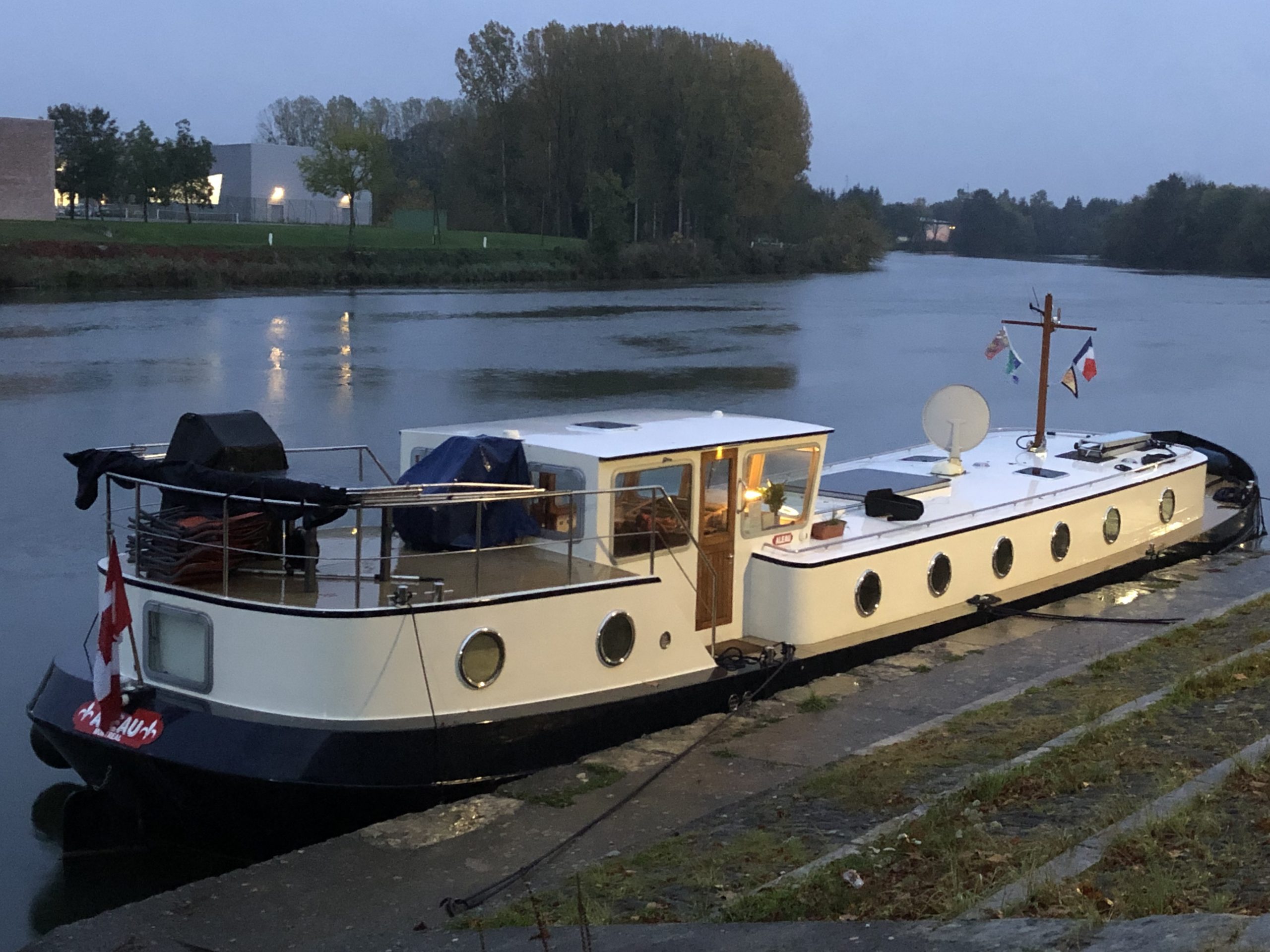It was time to escape cabin (barge?) fever and visit another new-to-us French town. We opened up Google Maps and threw an imaginary dart to choose our destination. For the first time (other than trips to Dijon), we would be traveling farther than 20 kilometres from home. Orchamps (Population 1,086 ) is 25 kilometres from Auxonne. We’re finally branching out.
Other than driving through it, we didn’t really see Orchamps. As luck would have it, Orchamps sits alongside the Canal du Rhône au Rhin. As you may have read in earlier chapters, it is a canal we intend to cruise on. It begins on the Saône River – 14 kilometres south of Auxonne – and is the closest canal to us. Needless to say, as soon as Peugey arrived in Orchamps, she took us straight to the canal. That was our one and only stop in Orchamps. We parked next to the lock.
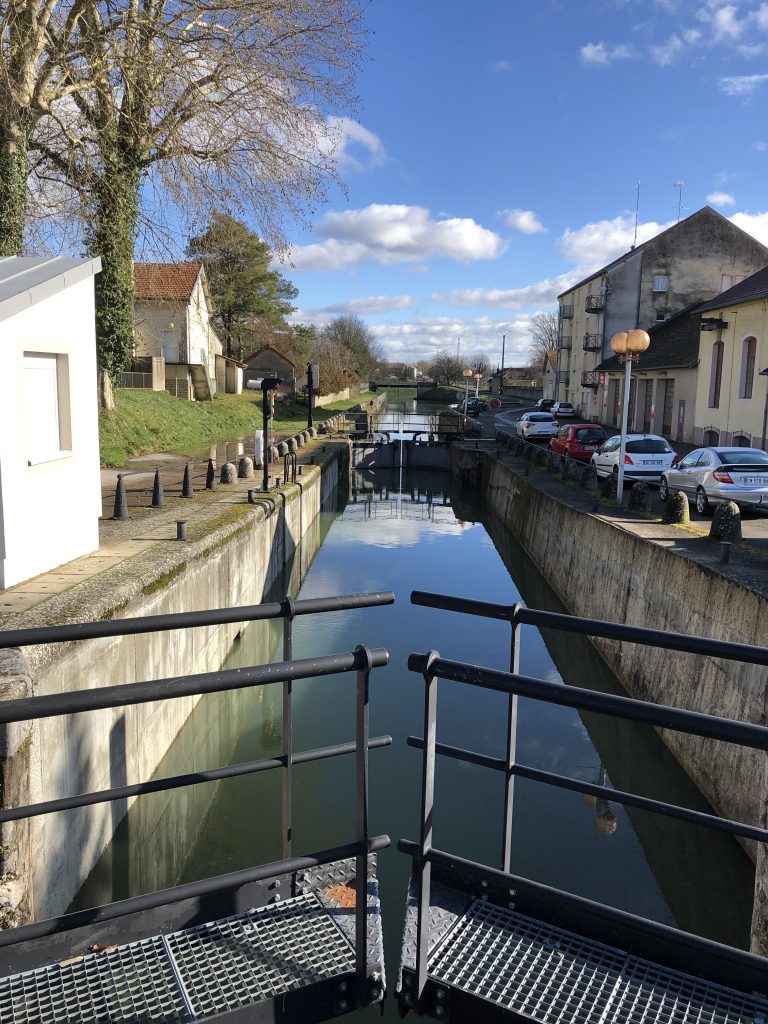
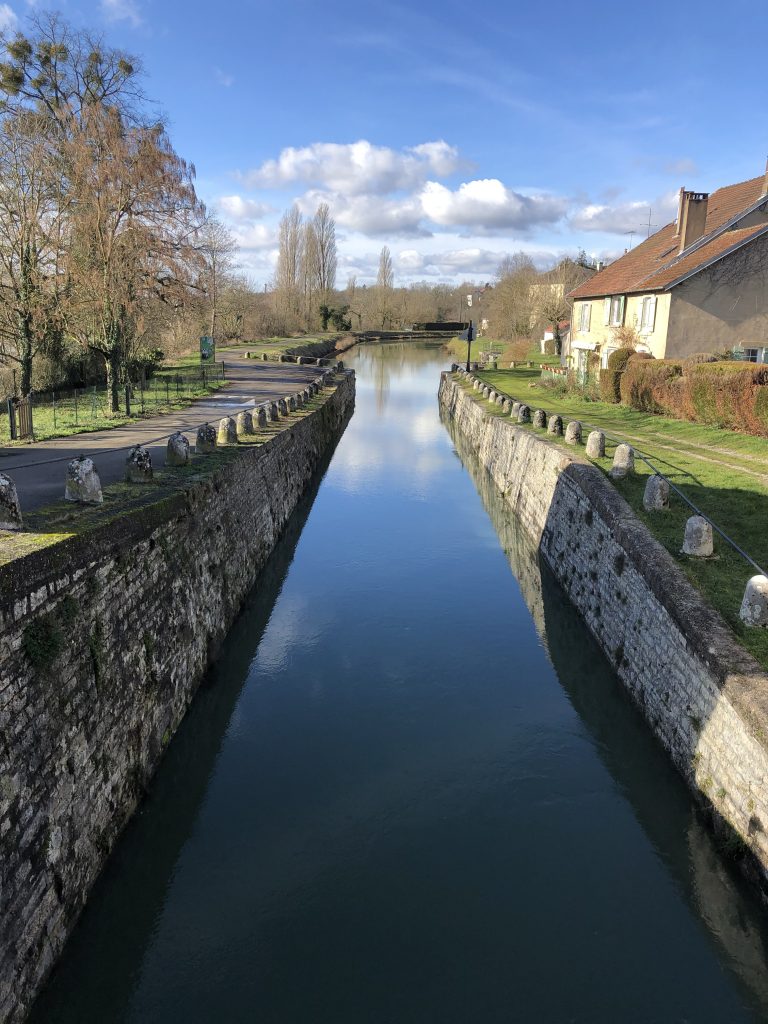
The Canal du Rhône au Rhin is not continuous. It only exists where the River Doubs is not navigable. And it certainly is not navigable in Orchamps.
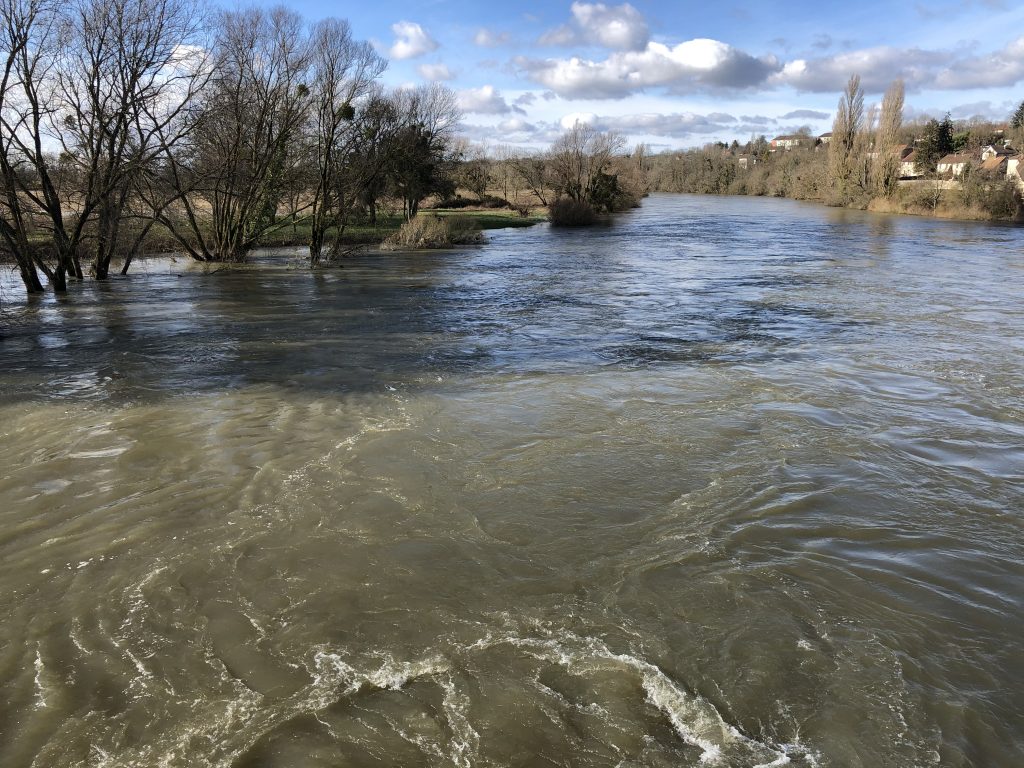
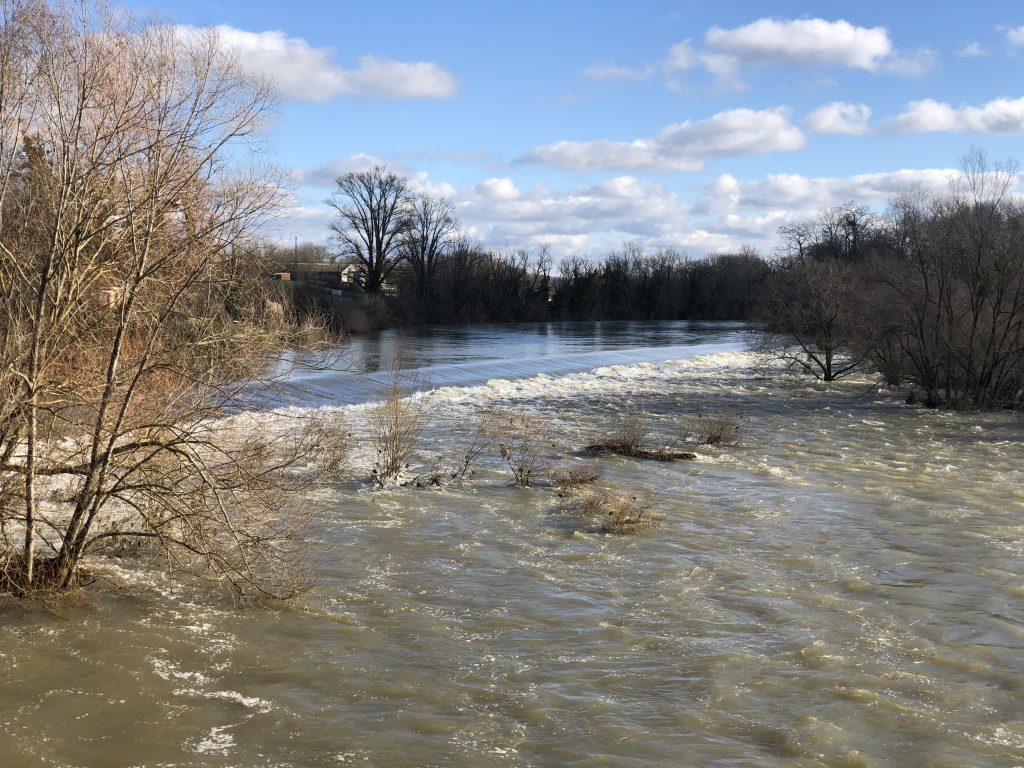
All canals in France have a towpath running alongside. After all, barges were in use long before there were engines to power them. They had to be towed. As you saw in Chapter 24, that task was often performed by the wife and children of the barge owner. While those days are gone, the towpaths are still in use. They are now beautiful routes for walkers, joggers, and cyclists. Most of them, as can be seen at the right of the photo below, are paved.
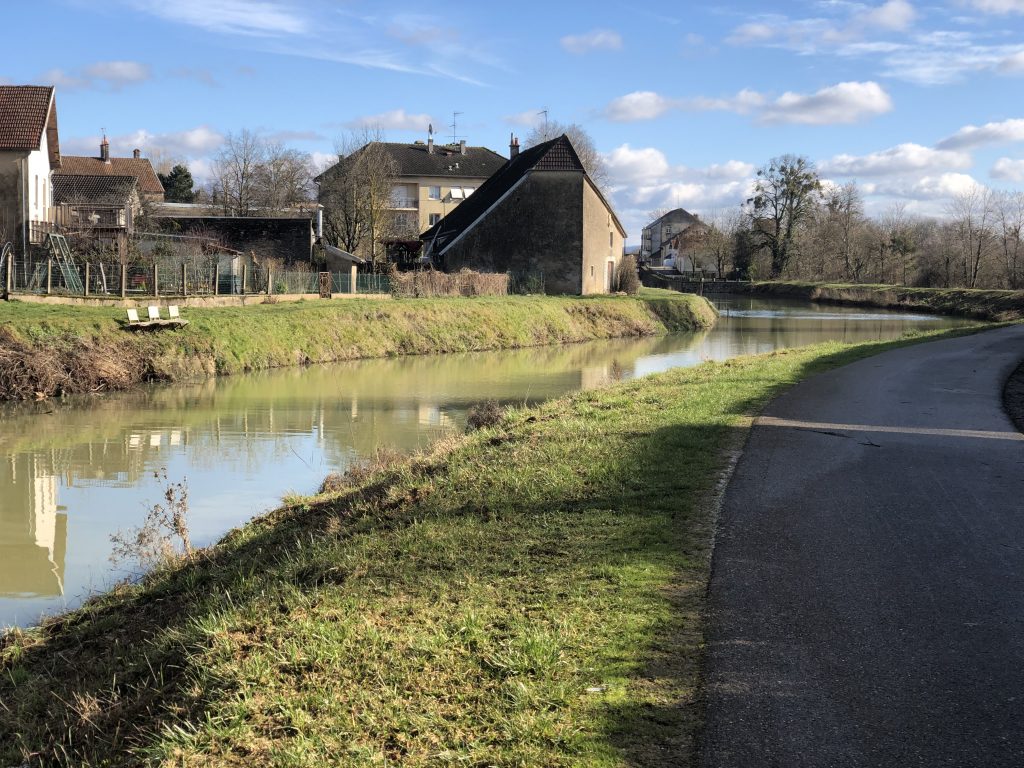
Many people have chosen to build houses alongside the canal.
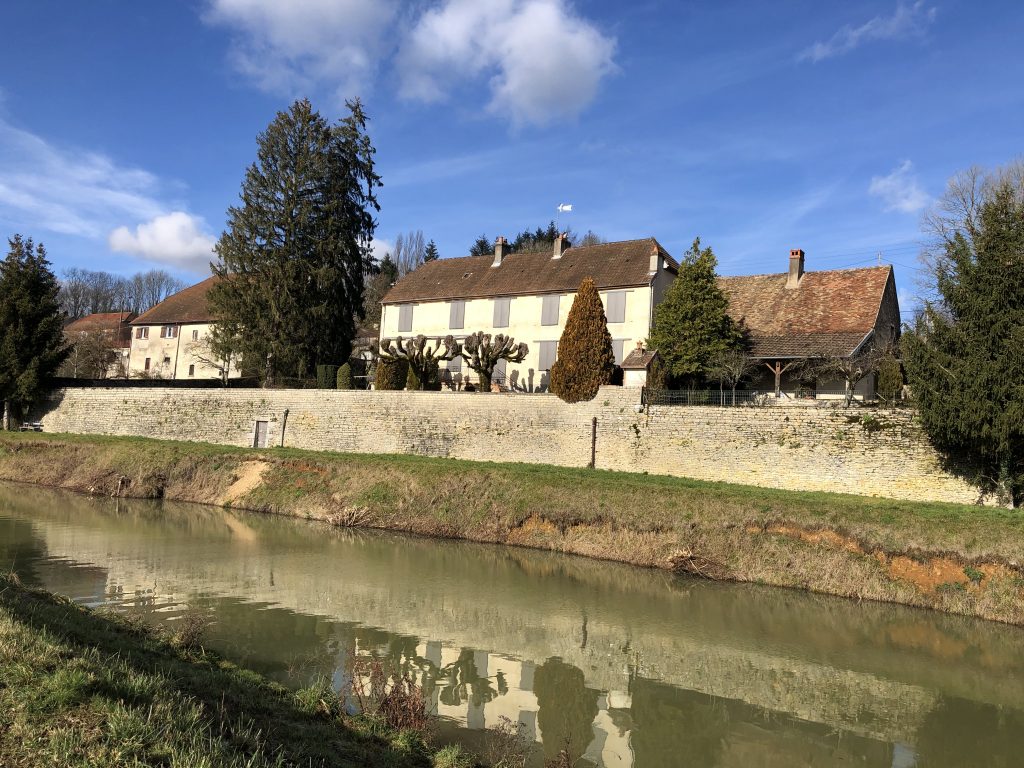
The owner of the house above has chosen to close every shutter. Personally, I would have let that beautiful afternoon sun stream in. But it’s not unusual in France to see windows shuttered.
Sandwiched in between the River Doubs and the Canal du Rhône au Rhin is another canal. I’m not sure why it was built – maybe as a source of power for watermills. In any case, the clearance is a bit too low to allow Aleau to pass.

Of course, on the real canal, the clearance is also pretty low. In fact, there’s a CEVNI low-clearance warning sign at the entrance to the lock. (It’s on the far right of the bridge – just below the railing – a mainly white sign with a black triangle at the top. Turn the side upside down and it warns of shallow water.)
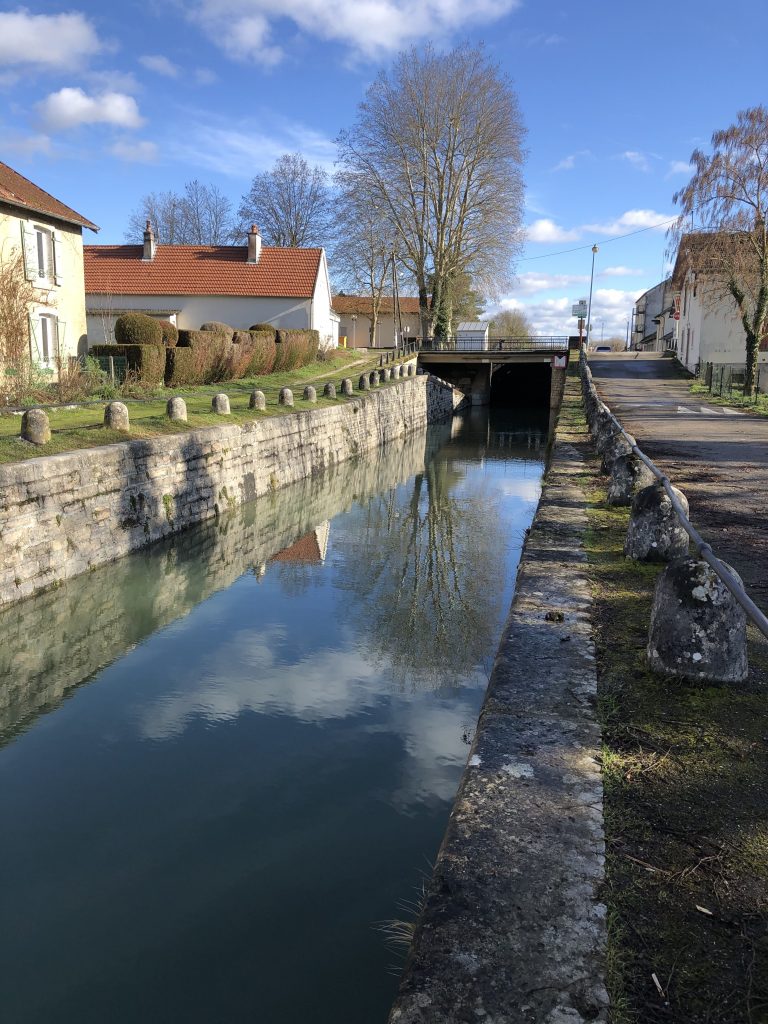
I borrowed the photo below from Google Maps. It shows a “commercial” passing through Orchamps. (You can see the River Doubs on the other side of the bank.) I guess if he can make it under that low bridge, we should be able to, too. If you look closely, you can see he has lowered his wheelhouse. Ours is made of steel and can’t be lowered. The mast at the bow of the commercial is leaned back. That is something we can do. In fact, on canals we always travel with the mast stepped.
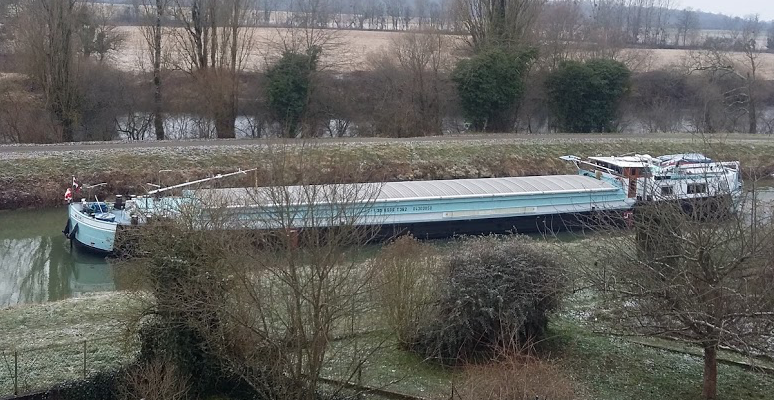
About a hundred metres before the lock, the canal narrows. It sort of guarantees you’ll be lined up for the lock gate. Better you bang against the stone wall on your approach than not be lined up straight for the lock gate and damage it. Better for the VNF, that is – not necessarily for the owner of the barge. Stone walls can do a lot of damage.
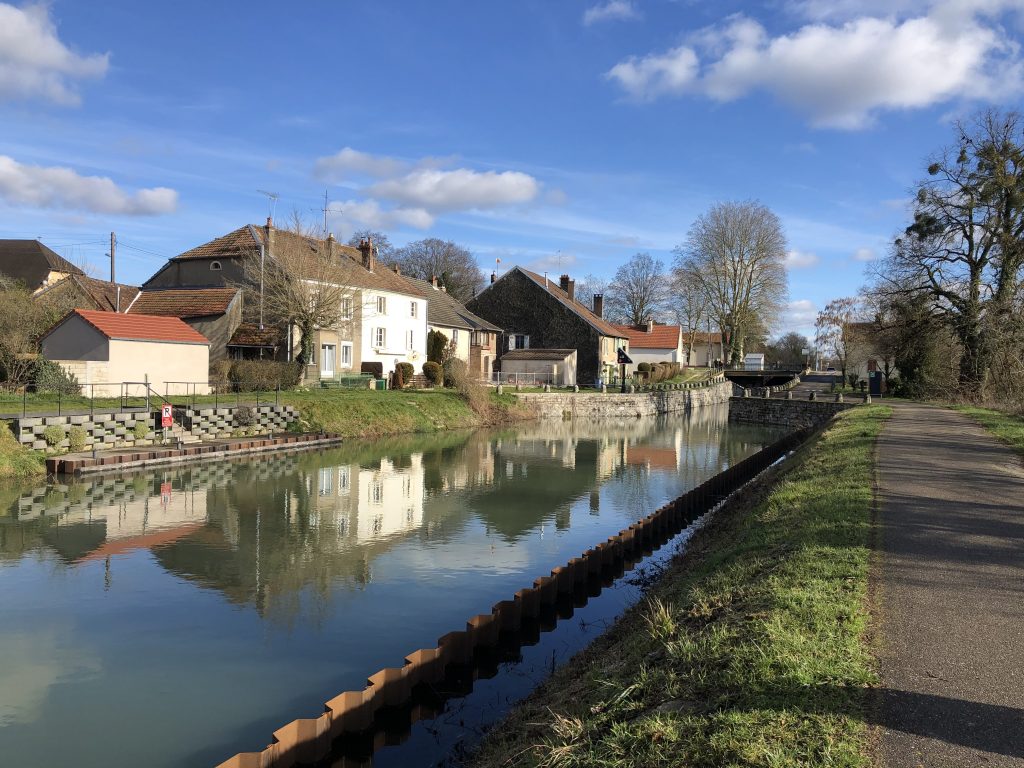
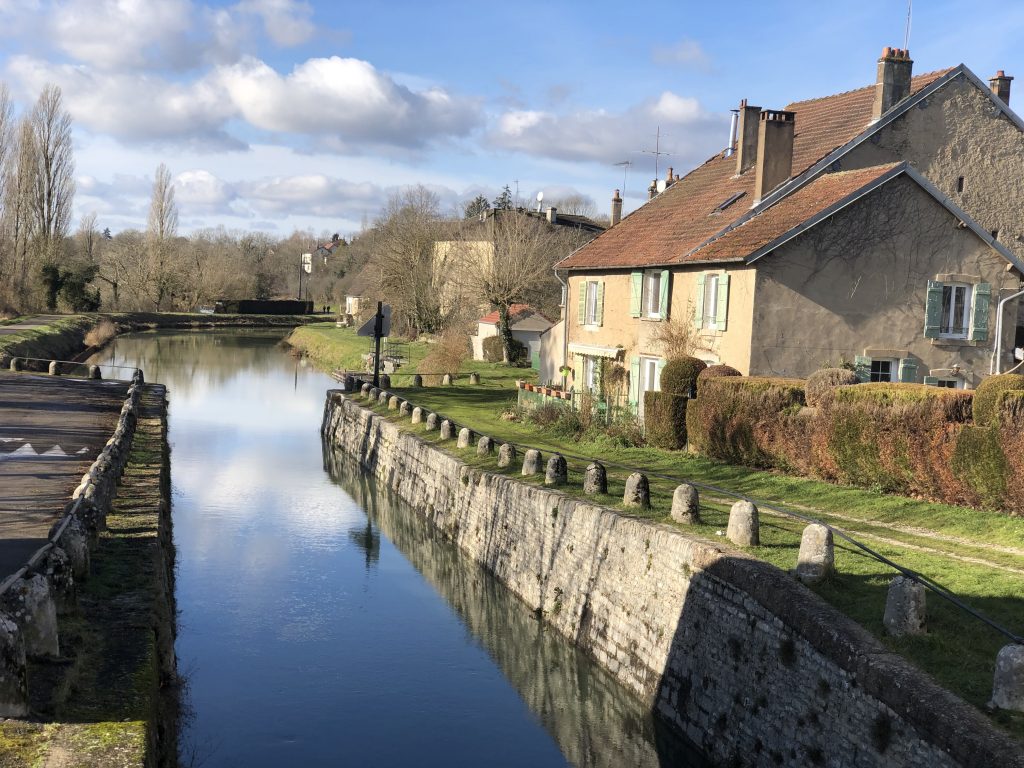
It was a beautiful day to walk along the canal. We took sandwiches with us and had a lovely picnic. Our cabin (barge) fever is gone. But when it returns, we’ll find another delightful spot to discover.
